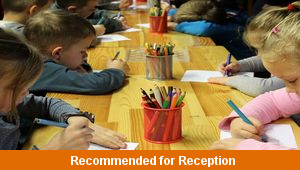Lesson Three – Market Stall

This curriculum topic teaching pack for the Foundation Stage gets the children to practise identifying, describing and comparing some of the different types of fruits and vegetables that can be sold in a market.
The class can explain and model how to role-play shopping and buying some special types of foods from a market stall that can used to make a special family meal.
Download this teaching pack including a lesson plan, classroom activities and an interactive presentation to practise identifying, describing and comparing some of the different types of fruits and vegetables that can be sold in a market
Activities in this teaching pack include display posters to identify and define vocabulary words that can be used to describe different foods, a template to select and record some of the different foods that can be sold on a fruit and vegetable market stall and a set of cards to record the prices of some of the foods to use when role-paying buying and shopping at a market.
The interactive presentation gets the children to explore how to describe and compare different fruits and vegetables that can be sold in a market.
This lesson is part of a curriculum topic scheme of work to get the children to identify and describe some of the different colours that can be used when buying, preparing and making foods for a range of meals. There are teaching activities for shared learning, differentiated worksheets to support independent learning and interactive presentations to introduce concepts and key skills.
-

Halving Things
Explain and model how to find and record the halves of some of the different objects that can be used at home and in school
-

School Friends
Identify and learn classroom routines and organisation by exploring and describing information and likes and dislikes for each of their classmates
-

Classroom
Identify the location and function of different objects used in the classroom and explore how to formulate rules to manage the classroom safely
-

Shape Patterns
Identify, describe and compare the sequences of geometric shapes that have been used to create a range of different patterns
